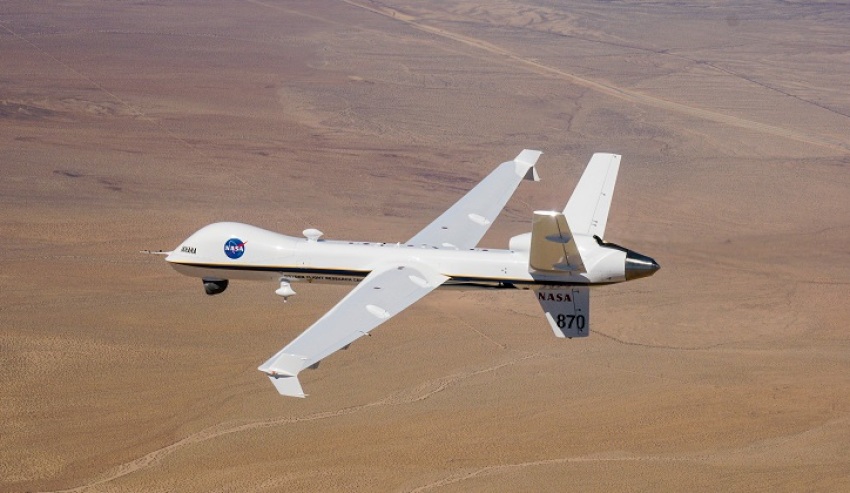One of the main contenders for Project AIR 7003 Phase 1 has successfully conducted a flight through the US National Airspace System (NAS) using a detect and avoid (DAA) avionics system.
To continue reading the rest of this article, please log in.
Create free account to get unlimited news articles and more!
A NASA-owned General Atomics Aeronautical Systems (GA‑ASI) Predator B unmanned aircraft system (UAS) – known as Ikhana – took flight through the NAS after taking off from southern California.
The DAA system installed on Ikhana, enabled the UAS to meet the FAA’s 14 CFR 91.113(b) requirement to “see and avoid” other aircraft during flight.
The DAA system combines automatic collision avoidance with the ability for the pilot to remain ‘well clear’ of other airspace users. Its subsystems include a GA-ASI-developed airborne radar, a TCAS II and DAA tracking capability from Honeywell, automatic dependent surveillance-broadcast (ADS-B) IN/OUT, and a conflict prediction and display system.
“Our goal of producing UAS that can be certified to fly in non-segregated airspace took a big step forward today,” said Linden Blue, CEO, GA-ASI.
“[The] successful flight is testament to the strong relationship that we have with the FAA, NASA’s Armstrong Flight Research Center and Honeywell to produce the definitive standard for unmanned aircraft operation in congested airspaces.”
David Alexander, president of aircraft systems at GA-ASI, said the DAA system is a game changer for manned and unmanned aircraft.
"Our DAA system is more capable than the collision avoidance systems required on today’s commercial manned aircraft and we believe it far exceeds the average pilot’s ability to ‘see and avoid’,” said Alexander.
“The predictive capabilities our system employs create a safe environment for manned and unmanned aircraft to fly together in the NAS.”
GA-ASI has been developing the DAA system with internal funding for inclusion on all its aircraft. In particular, the new MQ-9B SkyGuardian is provisioned to include the DAA system as a customer option, and the company’s MQ-25 offering also includes the opportunity for the US Navy to incorporate DAA.
The DAA system for MQ-9B is designed to comply with the FAA-designated DO-365 - minimum operational performance standards for detect and avoid systems.
GA-ASI's Predator B UAS is considered the leading contender for the AIR 7003 Phase 1 project, which is calling for a medium-altitude long-endurance (MALE) UAS, colloquially known as self-piloted 'killer drones'.
GA-ASI has formed partnerships with local Australian companies, known as Team Reaper Australia.
The team is made up of Cobham, Raytheon Australia, CAE Australia and Flight Data Systems, TAE Aerospace, Rockwell Collins, Ultra Electronics Australia, Airspeed and Quickstep Holdings.
However, questions around the project surfaced last year when IAI claimed the Department of Defence was blocking out the company from bidding for the project, which is listed as contestable on the Defence Integrated Investment Program (DIIP).
"This is one of the problems we have with this process, the lack of transparency," vice president of IAI's military aircraft group Shaul Shahar told Defence Connect last August.

 Login
Login







